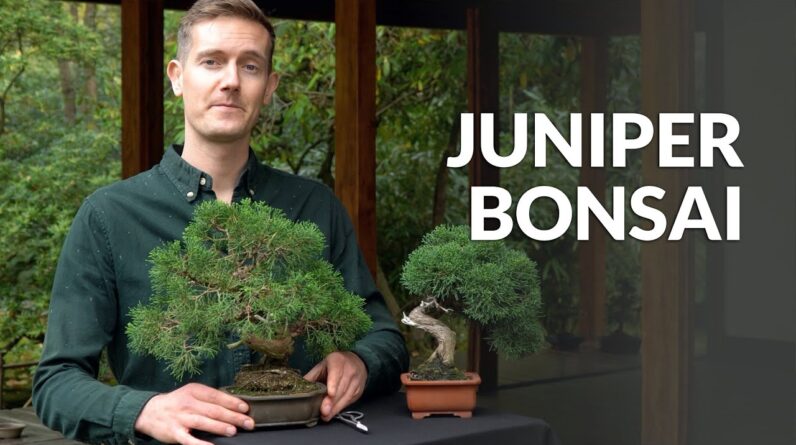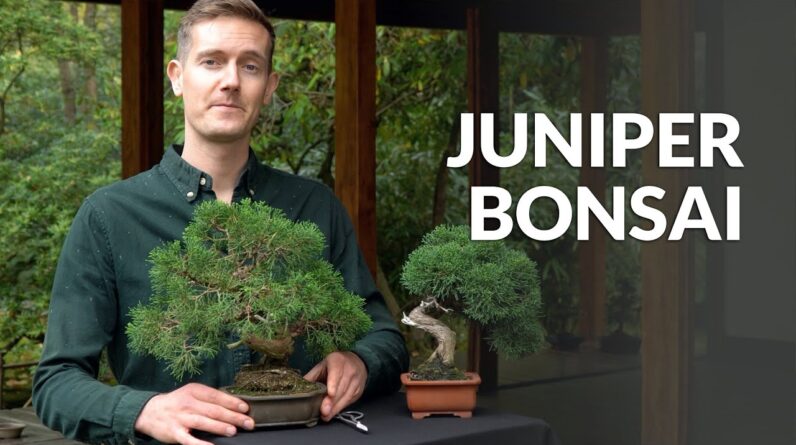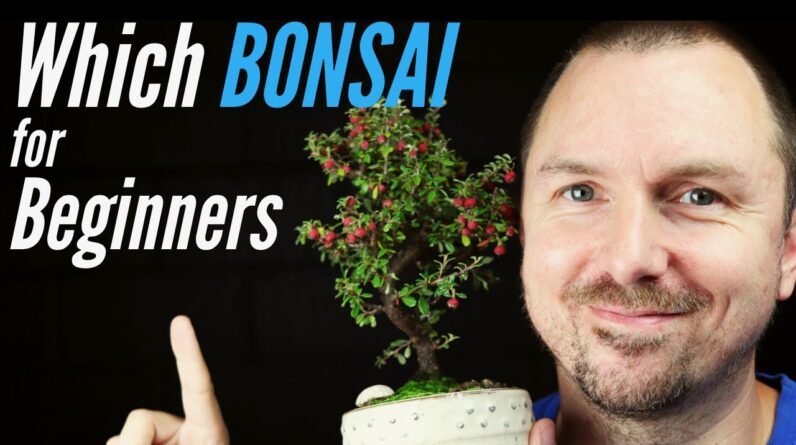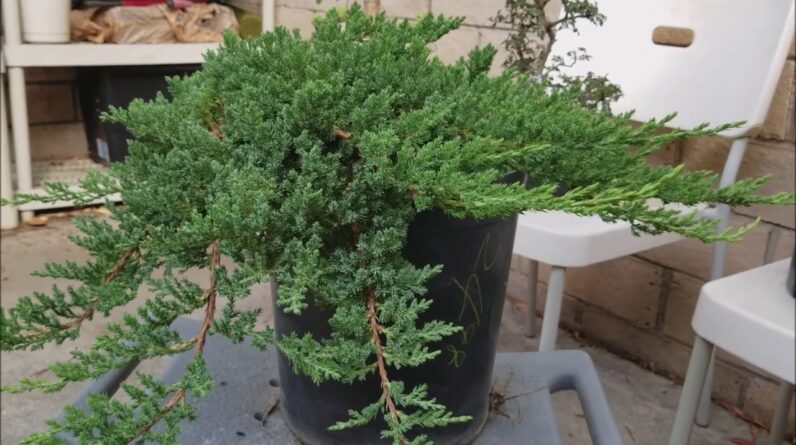Imagine bringing home a beautiful Juniper bonsai tree, only to discover that despite your best efforts, it begins to wither and die. Frustrating, right?
Well, the reason behind this conundrum lies in the very nature of the Juniper bonsai itself. While they may exude an aura of calm and tranquility, Juniper bonsai trees actually thrive in a specific set of environmental conditions that cannot be replicated indoors.
In this article, we’ll explore the reasons behind the Juniper bonsai’s inability to thrive indoors, and provide some helpful tips for ensuring its longevity. So, if you’re a bonsai enthusiast or simply curious about the fascinating world of these miniature trees, read on to uncover the secrets of the Juniper bonsai and its true living habitat.
Factors Affecting the Survival of Juniper Bonsai Indoors
Lighting
Proper lighting is essential for the survival of juniper bonsai indoors. Junipers are outdoor plants by nature, so they thrive in full sunlight. When grown indoors, it is crucial to provide them with as much natural light as possible. Place your juniper bonsai near a south-facing window where it can receive at least six hours of sunlight per day. If natural light is limited, you can supplement it with artificial grow lights. However, it is important to strike a balance and ensure that the bonsai does not receive too much light, as this can lead to sunburn and other issues.
Temperature
Temperature is another critical factor that affects the survival of juniper bonsai indoors. Junipers are hardy trees that are adapted to withstand a wide range of temperatures, but they prefer cooler conditions. Ideally, the temperature should be between 60-75°F (15-24°C) during the day and slightly cooler at night. Avoid placing your bonsai near drafty windows or heat sources, as sudden temperature fluctuations can harm the plant. Providing a consistent and moderate temperature will help your juniper bonsai thrive indoors.
Humidity
Juniper bonsai trees naturally grow in regions with higher humidity levels, so maintaining the right humidity indoors can be a challenge. Dry indoor air can lead to issues such as leaf and needle browning, as well as increased susceptibility to pests and diseases. You can increase humidity levels around your bonsai by using a humidity tray or placing the pot on a tray filled with water and pebbles. Misting the leaves occasionally can also help, but be careful not to overdo it as excessive moisture can promote fungal diseases.
Air circulation
Good air circulation is essential for the overall health and survival of your juniper bonsai indoors. It helps prevent stagnant air, which can lead to problems like mold and leaf drop. Ensure that the bonsai is not placed in a completely enclosed space with restricted airflow. Regularly opening windows or using fans can promote proper air circulation. However, avoid placing the bonsai near drafty areas, as sudden changes in air movement can be detrimental to its well-being.
Root Health
Limited space for root development
One of the challenges of growing juniper bonsai indoors is providing enough space for healthy root development. Bonsai trees are grown in shallow containers, which restrict the expansion of their root systems. This limited space can lead to root congestion and hinder the tree’s overall health. Regularly pruning the roots and repotting the bonsai every two to three years helps alleviate this issue. Use well-draining bonsai soil and ensure that the roots have ample room for growth in the new pot.
Moisture control
Maintaining proper moisture levels in the bonsai’s soil is crucial for its root health. Overwatering can lead to root rot and other fungal diseases, while underwatering can cause the roots to dry out and eventually perish. The key is to water the bonsai thoroughly when the top inch of the soil feels dry, but avoid allowing it to sit in standing water. Ensure that the bonsai pot has drainage holes to allow excess water to escape. Regularly monitoring the moisture levels and adjusting your watering routine accordingly is essential for root health.
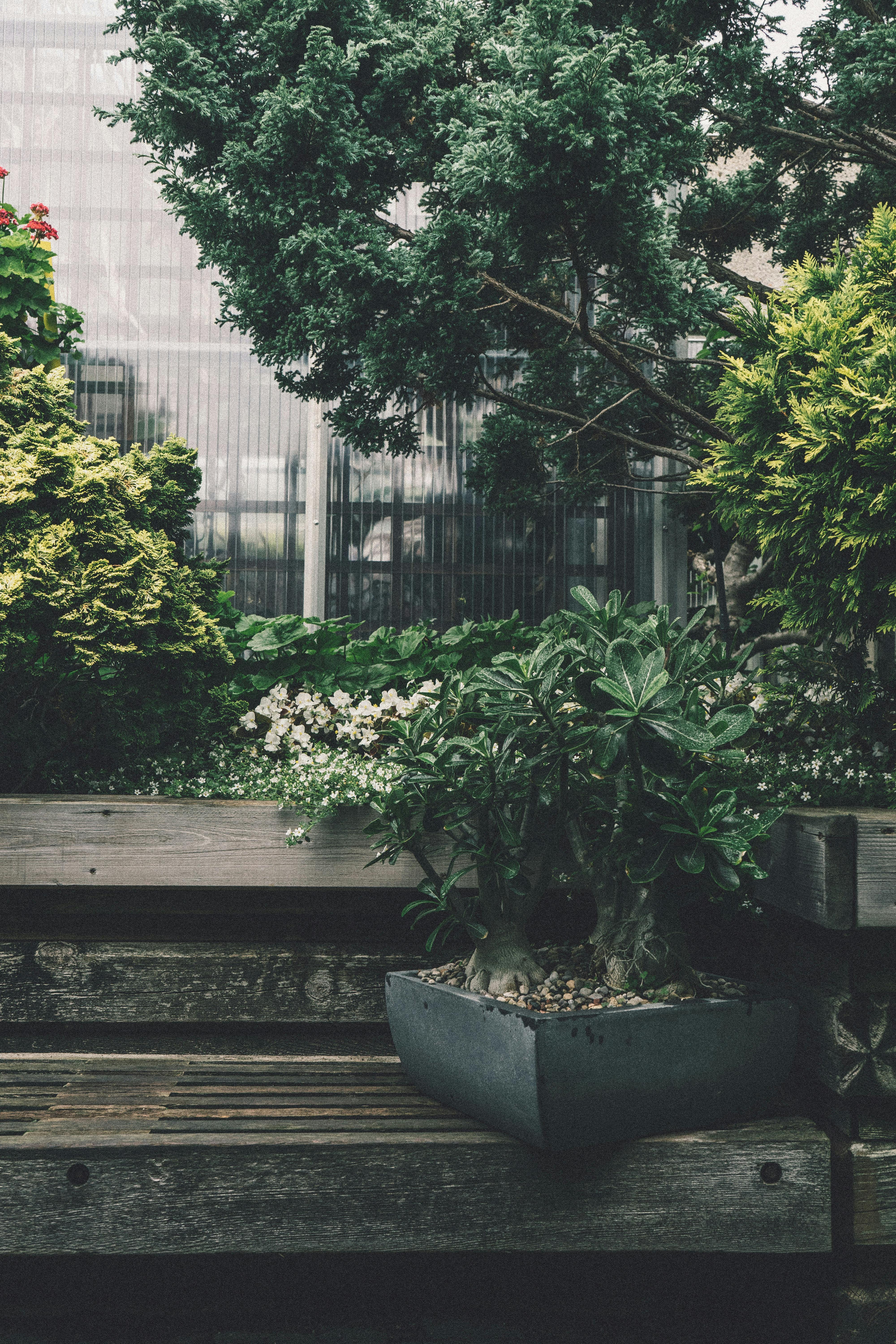
Leaf and Needle Health
Sunburn
Juniper bonsai trees are susceptible to sunburn, especially when they are transitioned from outdoors to indoors. Sudden exposure to intense sunlight can cause burning or discoloration of the leaves or needles. To prevent sunburn, gradually acclimate your bonsai to indoor conditions by placing it in a shaded area initially and gradually increasing the amount of light exposure over a period of weeks. This will allow the tree to adjust to lower light levels and reduce the risk of sunburn.
Leaf drop
Leaf drop is a common issue with juniper bonsai trees when they are kept indoors. The change in environment, specifically the lower light levels and humidity indoors, can cause the tree to shed its leaves. While it may be alarming to see your bonsai losing leaves, it is a natural response to stress. To minimize leaf drop, ensure that your bonsai receives adequate light, reasonable humidity levels, and proper care. With time and proper acclimation, your juniper bonsai should adapt to its indoor environment and maintain its foliage.
Needle browning
Needle browning is another concern for juniper bonsai trees grown indoors. It can be caused by various factors such as underwatering, low humidity, or inadequate light. Ensure that you follow a consistent watering routine, keeping the soil moist but not waterlogged. Increase humidity levels around the bonsai by using trays filled with water and misting the needles occasionally. Additionally, providing sufficient light, either through natural sunlight or artificial grow lights, will help prevent needle browning.
Pests and Diseases
Common bonsai pests
Juniper bonsai trees are susceptible to pests like spider mites, aphids, and scale insects. These pests can cause damage to the leaves and overall health of the tree if left untreated. Regularly inspect your bonsai for signs of pest infestation, such as webbing, sticky residue, or distorted foliage. If you notice any pests, it is important to take immediate action. There are various organic pest control methods available, such as using insecticidal soaps or neem oil, to effectively manage and eliminate these pests.
Fungal diseases
Fungal diseases can also pose a threat to the survival of juniper bonsai trees. The high humidity levels often found indoors can create a favorable environment for fungi to thrive. To prevent fungal diseases, it is important to avoid overwatering and ensure proper air circulation. Pruning and thinning the foliage regularly can also help increase airflow and reduce the risk of fungal infection. If you notice any signs of fungal diseases, such as leaf spots or powdery mildew, applying a suitable fungicide can help control the spread of the disease.
Maintenance Requirements
Pruning and shaping
Regular pruning and shaping are essential for maintaining the health and aesthetic appeal of your juniper bonsai. Pruning helps control the size and shape of the tree, as well as promote new growth. It is recommended to prune your bonsai during the growing season, removing any dead, diseased, or overly long branches. Additionally, wiring can be used to shape the branches and give your bonsai a desired form. Take care when pruning and shaping to ensure that you do not remove too much foliage at once, as this can stress the tree.
Watering
Proper watering is crucial for the survival of your juniper bonsai. As mentioned earlier, maintaining the right moisture levels in the soil is essential. Water your bonsai thoroughly when the top inch of the soil feels dry, ensuring that the water reaches all parts of the root system. Avoid watering the foliage, as this can increase the risk of fungal diseases. By regularly monitoring the moisture levels and adjusting your watering routine accordingly, you can ensure that your juniper bonsai receives adequate hydration.
Fertilization
Fertilizing your juniper bonsai is necessary to provide it with the essential nutrients it needs to thrive. Use a balanced bonsai fertilizer during the growing season to promote healthy growth and vibrant foliage. Follow the instructions on the fertilizer packaging for the appropriate dosage and frequency of application. It is important not to over-fertilize, as this can lead to root burn and other issues. Regularly inspect the foliage for any signs of nutrient deficiencies, such as yellowing leaves, and adjust your fertilization routine accordingly.
Alternative Solutions for Indoor Growing
Terrariums and enclosed spaces
If providing the necessary lighting, temperature, humidity, and air circulation for your juniper bonsai indoors proves challenging, you may consider alternative solutions such as terrariums or enclosed spaces. These enclosed environments can provide more controlled conditions for your bonsai’s growth. However, it is important to research and understand the specific needs of your bonsai species before opting for this method. Terrariums require proper ventilation and monitoring of moisture levels to avoid excessive humidity and promote good air circulation.
Artificial lighting systems
In situations where natural light is limited, or you are unable to provide the required sunlight for your juniper bonsai, artificial lighting systems can be a viable solution. LED grow lights are a popular choice as they provide a full spectrum of light that mimics natural sunlight. Position the grow lights above your bonsai at the recommended distance and duration to ensure proper light exposure. Remember to monitor the intensity and duration of the artificial light to prevent potential issues such as sunburn.
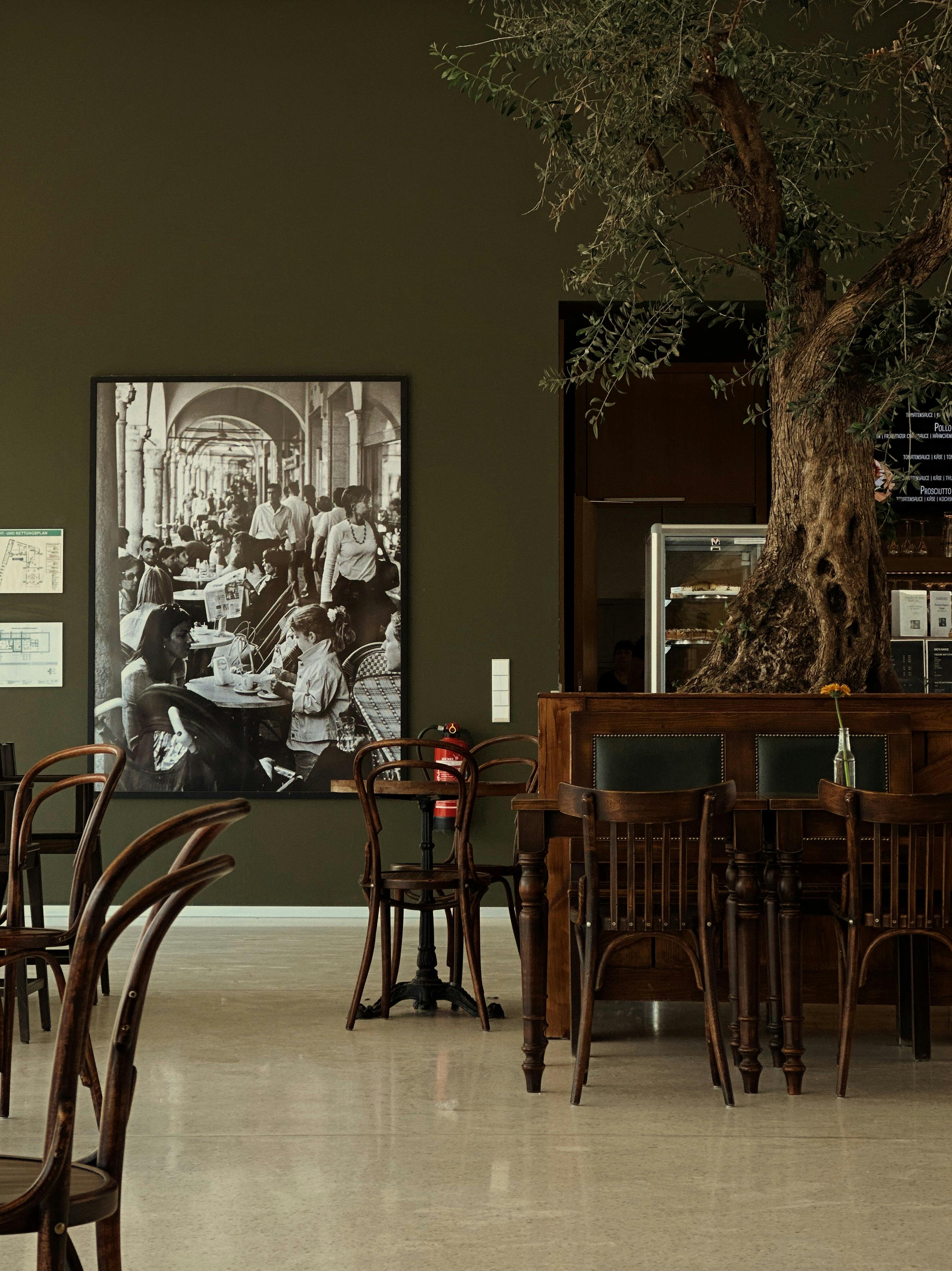
Growing juniper bonsai indoors may present challenges, but with proper care and attention to factors such as lighting, temperature, humidity, air circulation, root health, leaf and needle health, pest and disease prevention, and maintenance requirements, you can create a suitable environment for your bonsai to thrive. While alternative solutions like terrariums or artificial lighting systems can offer additional options, it’s important to remember that replicating the natural outdoor conditions where juniper bonsai naturally grow is the ultimate goal.
With patience, dedication, and a friendly approach, you can enjoy the beauty and tranquility of a juniper bonsai within your indoor space.


